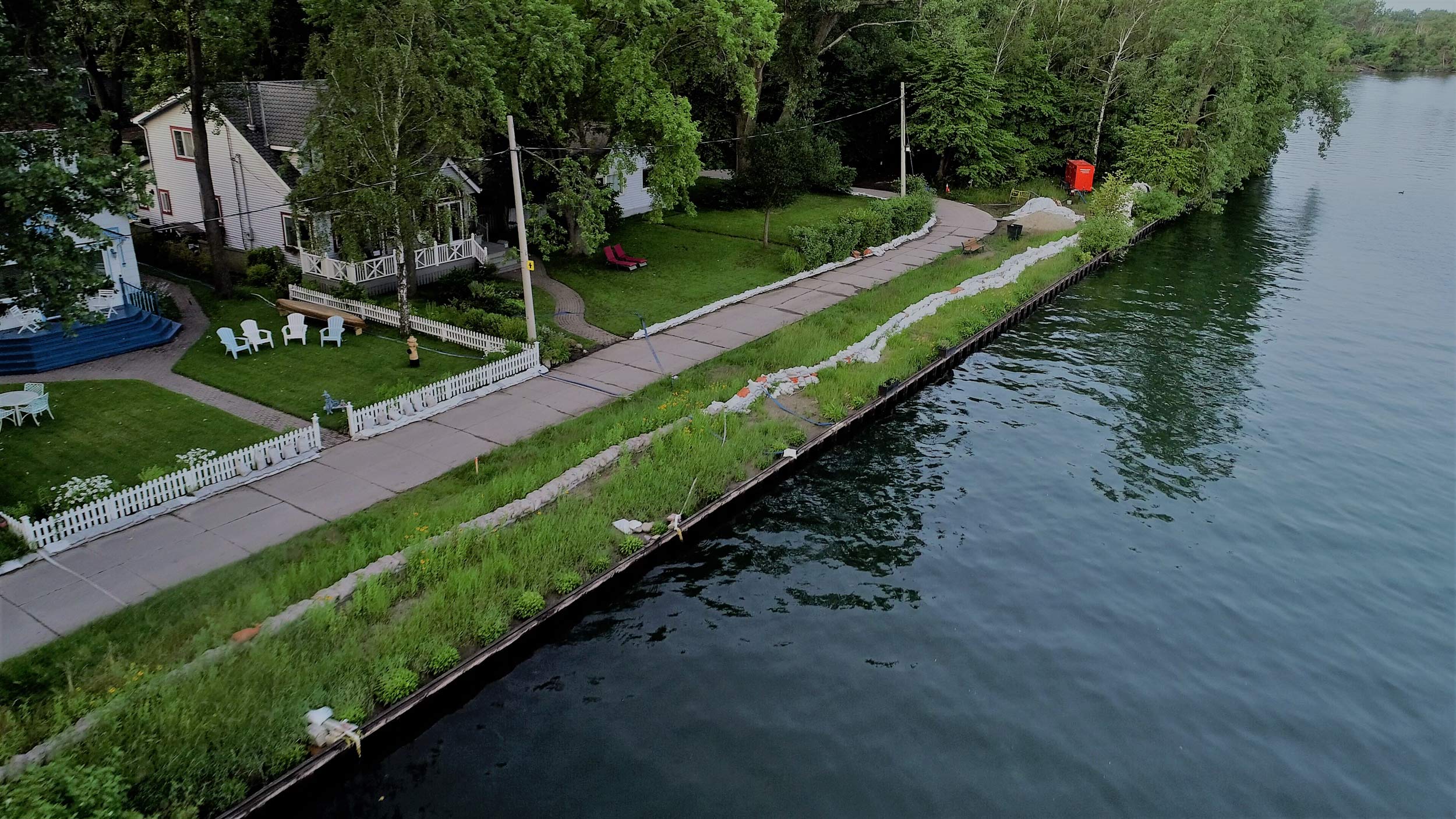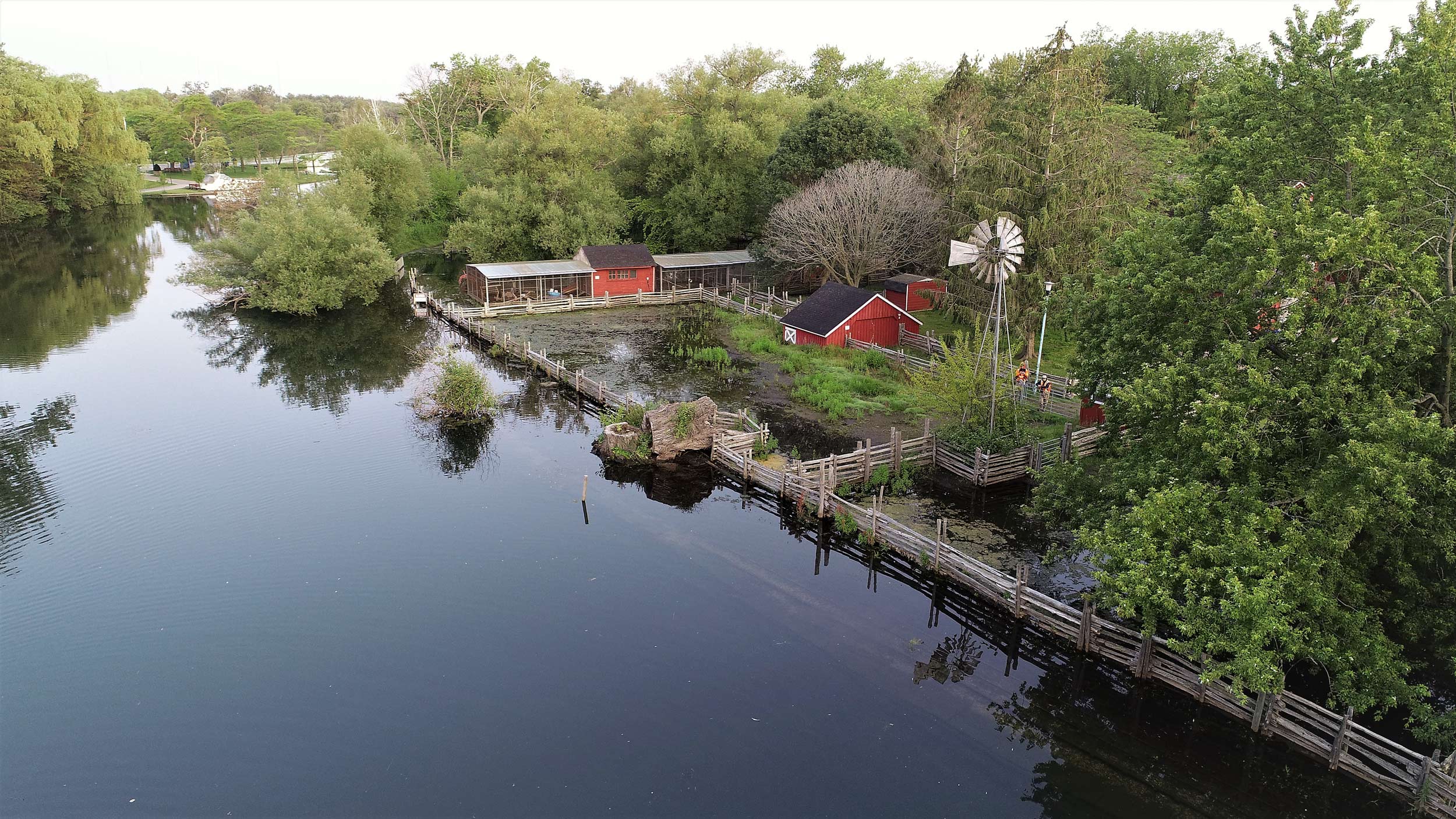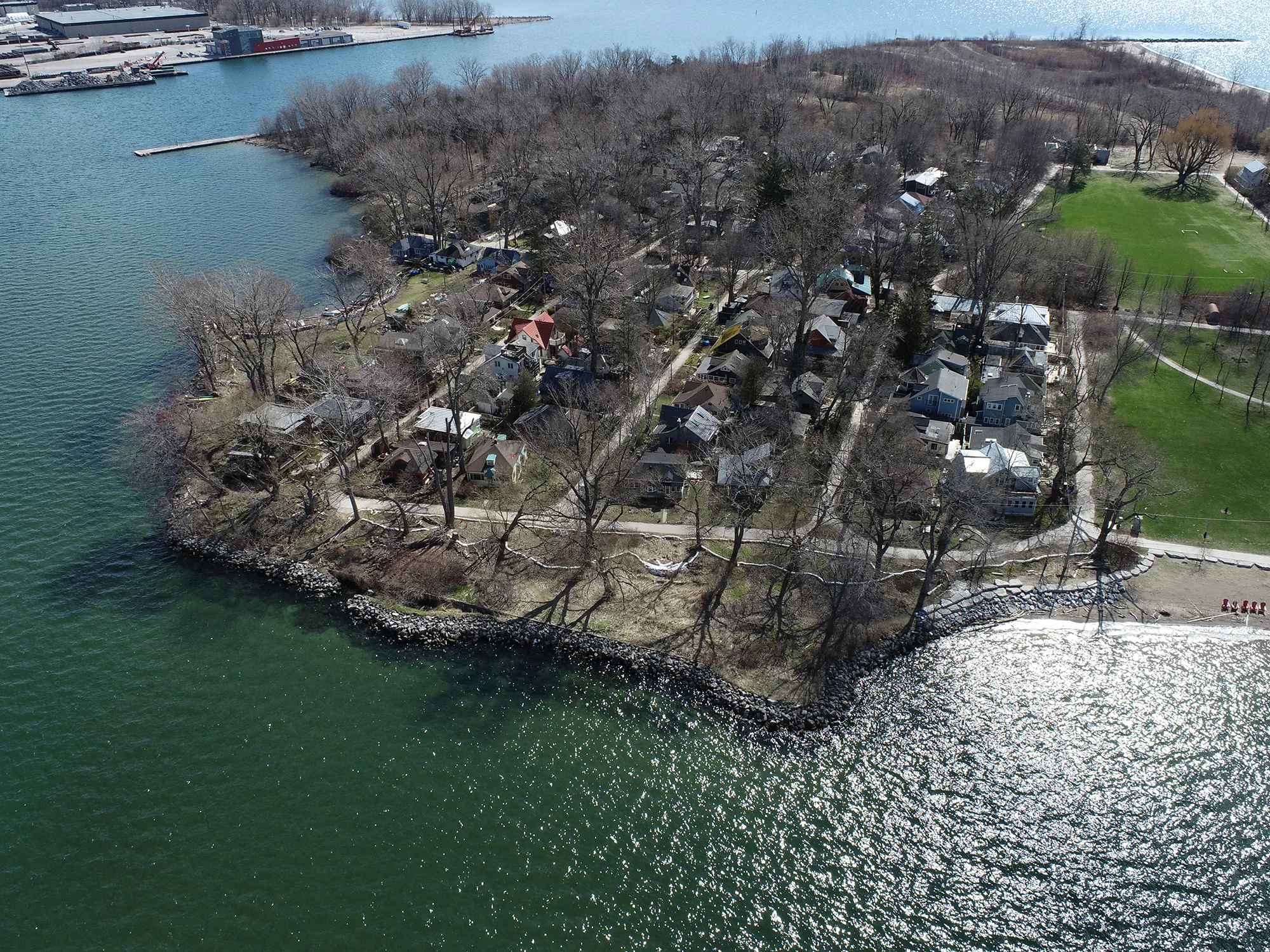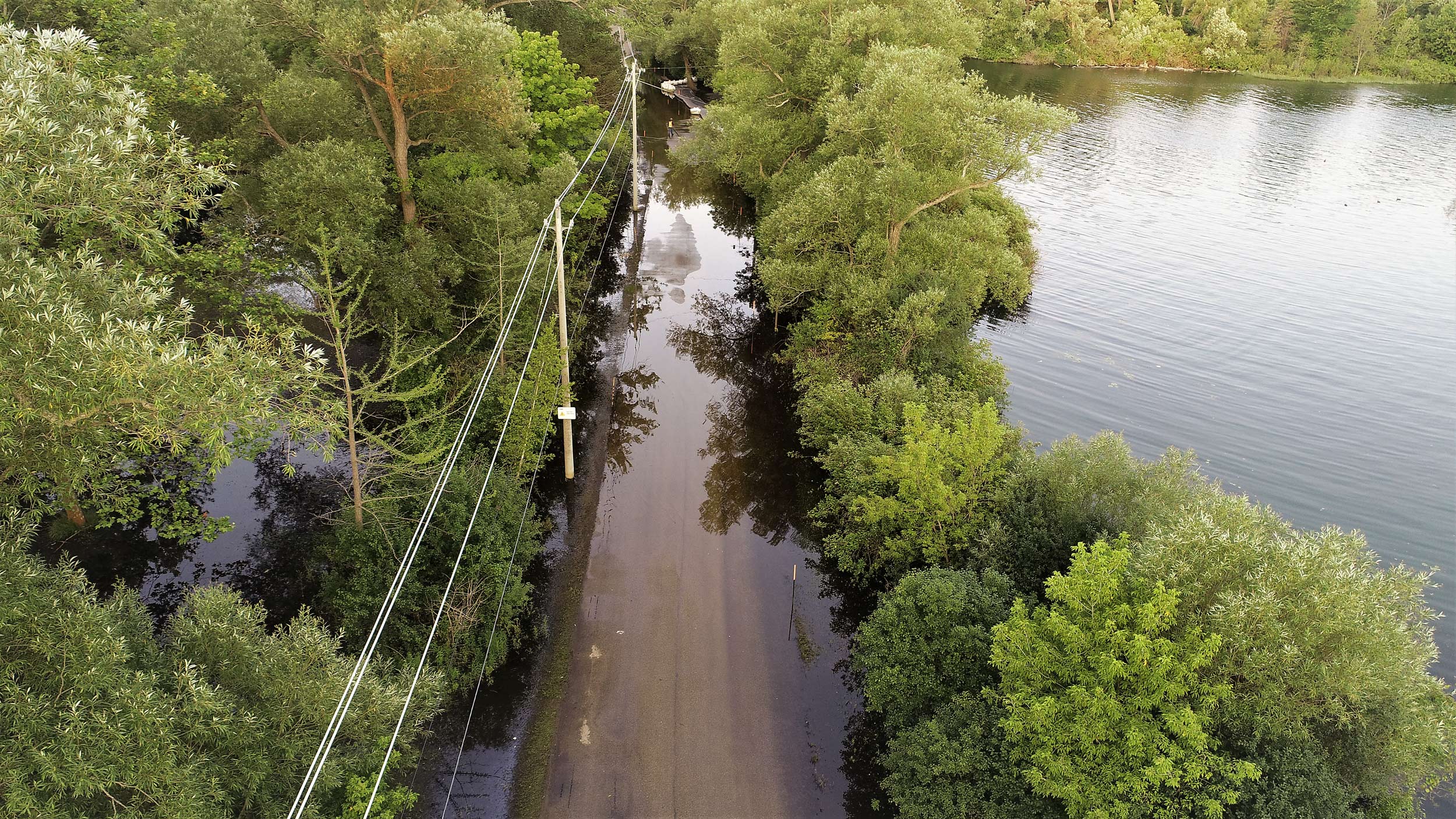FAQ
Unclear on a project topic? Check out the Frequently Asked Questions below.
If you have any questions not answered here, try watching the recording of our live webinar event that was hosted by the project team on April 13, 2023, at 6:00-8:00 pm: Live Event Recording. Any additional questions can be submitted to the team directly at TorontoIslandFloodEA@trca.ca. We’re happy to help and hear from you!
General Questions
The Toronto Island Park Flood and Erosion Mitigation Project is being completed to develop long-term flood control measures that will help protect the Toronto Islands from future flooding and high lake level events. To complete this study, a Class Environmental Assessment (Class EA) has been initiated which gives the public an opportunity to participate and provide feedback. Your input will be incorporated into the planning and design process.
The second round of public engagement is now complete and the community feedback period closed on April 21, 2023. To stay involved and receive future project updates, please join our mailing list by signing up at the bottom of this page. For general updates, please visit the TRCA project webpage.
The project will help protect the Toronto Islands from flooding by developing long-term mitigation measures that are designed to prevent shoreline flooding and erosion. These measures will help prevent areas of the park from flooding the next time there is a high lake level event.
Study Areas were identified based on two risk factors: extent of flooding during the 100-year flood event and risk of flooding to existing park infrastructure. Based on this risk, four main Study Areas were identified for flood protection. Some areas of the park that are vulnerable to flooding during the 100-year flood event were not included as Study Areas; this is because they do not have any existing infrastructure or major park amenities and therefore flood risk is considered low. More information on the identified sites can be found on the Study Areas Page.
Short-term measures are used on a temporary basis during high water level events to protect areas that are immediately at risk of flooding. Some examples of short-term mitigation measures include sandbags, water pumps, and aquadams. Long-term measures are permanent structures that are designed to protect land from flooding in the future.
Concept designs are an early phase of the design process where the big picture or broad ideas of a treatment option are presented for review. Concept designs are developed after the background review and data collection phase is completed to ensure that the proposed treatment options are appropriate for site conditions. As part of the Class EA process, several treatment options at the concept design level are developed for evaluation in order to select the preferred alternative.
Preferred alternatives are the concept designs that are identified as the best solution to addressing the problem. Proposed concept designs are evaluated against each other, in addition to the “do-nothing” approach, based on environmental criteria and public feedback. Evaluation criteria includes, but is not limited to:
- Effectiveness against flooding and erosion hazards
- Impacts to the natural environment
- Impacts to the social and cultural environment
- Public safety
- Technical feasibility
- Construction cost and maintenance requirements
The goal of this process is to identify the highest ranked concept (the “preferred alternative”) for further development into a detailed design.
Detailed design is the process of taking the preferred alternative and developing it in more detail so that it is ready for construction. This typically involves the development of more technical design criteria such as material size, amount, and placement requirements. The detailed design phase will take place after the preferred alternatives are approved through the Class EA process.
The purpose of the 2018 Toronto Islands Flood Characterization and Risk Assessment Project was to provide TRCA and the City of Toronto with a better understanding of the type and location of flood risks at Toronto Island Park. The study also presented some possible solutions for flood protection to inform future planning processes; however, a Class EA that evaluates all alternatives must be completed before long-term flood protection works can be installed. Recommendations from the Toronto Islands Flood Characterization and Risk Assessment Project have been reviewed as part of the Class EA. Where appropriate the proposed alternatives from that study, in addition to several new alternatives, have been incorporated into the concept development phase of the Class EA to ensure they undergo a full evaluation.
Following completion of the Class EA process, the project will proceed to the detailed design and permitting phase for priority sites. Construction works will be phased based on site priority and will be subject to funding availability.
No, this project is separate from the Toronto Island Park Master Plan that is being completed by the City of Toronto. The Class EA is focused on developing long-term solutions for flood protection at Toronto Island Park. The Master Plan will be a long-term planning document that outlines a Vision, Values, Guiding Principles and Big Ideas to guide change and investment in Toronto Island Park over the long-term. TRCA and the City of Toronto are working together to ensure that both projects align with one another. Please visit the City of Toronto's website for more information on the Master Plan.
Class Environmental Assessment Process
The Environmental Assessment (EA) process ensures that governments and public bodies consider potential environmental effects before an infrastructure project begins. A Class Environmental Assessment (Class EA) is a standardized planning process for groups, or “classes” of activities, that are carried out routinely and have predictable environmental effects which can be easily managed. This includes repair work required to protect human life and property in developed areas from flood and erosion concerns. Class EAs are a collaborative process with the public and other stakeholders that allows for community feedback and participation. For more information, visit the Government of Ontario’s webpage on Environmental Assessments.
Following completion of the Class EA process, the project will proceed to the detailed design and permitting phase for priority sites. Construction work will be done in phases based on priority and subject to funding availability.
Technical Terms
The 100-year flood event is often mistaken as a flood that will occur once every 100 years. The 100-year flood event is actually a statistical probability that in any given year there is a 1 in 100 chance (1%) that an at-risk area will flood. This means that the 100-year flood event can occur more frequently than every 100 years. For lake flooding, the 100-year flood level is generally expressed as a flood elevation or depth and considers additional factors such as wind and wave conditions. The water level for the 100-year flood event (76.2 m IGLD85) has been used as a design condition for this study to identify at-risk sites and develop appropriate flood and erosion mitigation solutions for them.
Sheet pile walls are typically made of smaller interconnecting sections of a material to create a long continuous wall. The most common type of sheet pile wall is made from steel sheets because they are strong, durable, and easy to install. These walls are often used to retain soil or water. For the purposes of flood protection, they can be used to keep water out of a specified area if placed along its perimeter.
Beaches can consist of natural material like sand or engineered material like rock and construction rubble. Beaches protect the shoreline by absorbing incoming waves.
Shoreline revetments are sloping erosion control structures that absorb wave energy. They also provide structural support to shoreline slopes. Revetments can be constructed with large boulders, cobbles, or construction rubble.
A berm is a raised bank that is designed to increase the elevation of the shoreline to prevent flooding and erosion. The proposed berms for this project include an impermeable layer that makes them appropriate for flood control.
A groyne is a fingerlike structure that extends from the shore into a body of water. Most often they are perpendicular to the shoreline but can be built at a slight angle. The role of a groyne is to interrupt water flow and to limit the movement of sediment. Groynes promote the creation of natural beaches as they are designed to trap sediment.
Flood Risks
Lake Ontario water levels depend primarily on three factors:
- Inflows from Lake Erie – these are unregulated and account for approximately 85% of inflows into Lake Ontario.
- Seasonal runoff – runoff from watersheds, like those in TRCA’s jurisdiction, that drain directly into Lake Ontario.
- Outflow from Lake Ontario – this is regulated at the Moses-Saunders Dam by the International Lake Ontario St. Lawrence River Board (ILOSRB) of the International Joint Commission (IJC). Control of the outflow, however, does not ensure full control of Lake Ontario levels or river levels downstream. Outflows are influenced by the spring peak flow of the Ottawa River as the ILOSRB is charged with regulating flows to balance both upstream and downstream risks.
The Great Lakes water levels fluctuate between multi-year periods of higher average water levels and lower average water levels according to natural processes. As a result of these natural processes, Lake Ontario water levels rise seasonally in the spring and early summer each year.
Lake Ontario water level forecasts are issued by the International Lake Ontario St. Lawrence River Board (ILOSRB). Based on current forecasts, Lake Ontario water levels are currently above average, but they are not projected to reach the extreme water levels of 2017 and 2019. Actual conditions will depend largely on the spring snowmelt (ie. seasonal runoff) from all of the water systems draining into Lake Ontario as well as into the St. Lawrence River.
Short-term mitigation measures would be implemented to protect areas at immediate risk, similar to those put in place during the 2017 and 2019 flooding events. Long-term mitigation measures may be installed on an emergency basis in select areas.
In the event of shoreline flooding, keep yourself safe by practicing the following:
- Exercise caution around Lake Ontario shoreline areas, especially during periods of elevated lake levels; high water levels and large waves may make these areas dangerous.
- Avoid areas that are flooded or are experiencing wave action and/or erosion, especially shoreline trails. Obey all trail closure notices.
- Keep children and pets away from shoreline areas.
- Contact your local municipality 311 line for updated information on park and beach operations status.
TRCA issues flood messages for the Lake Ontario shoreline within TRCA’s jurisdiction. To sign-up to receive TRCA flood messages via email, visit TRCA’s Flood Forecasting & Warning webpage.




